WHO chief said Wuhan provides hope to the world that even the most severe situation of COVID-19 can be turned around.
by Xinhua Writer Xuan Liqi
WUHAN, March 24 (Xinhua) -- Wuhan, the Chinese city hardest-hit by COVID-19, is giving hope and courage to the whole world in the global battle against the virus.
Noting the city reported no new cases of the COVID-19 for the first time on March 18, Tedros Adhanom Ghebreyesus, director general of the World Health Organization (WHO), said Wuhan provides hope to the world that even the most severe situation of COVID-19 can be turned around.
Recovering from the virus in its months-long battle, the city had reported no new confirmed COVID-19 cases for five consecutive days as of March 22.
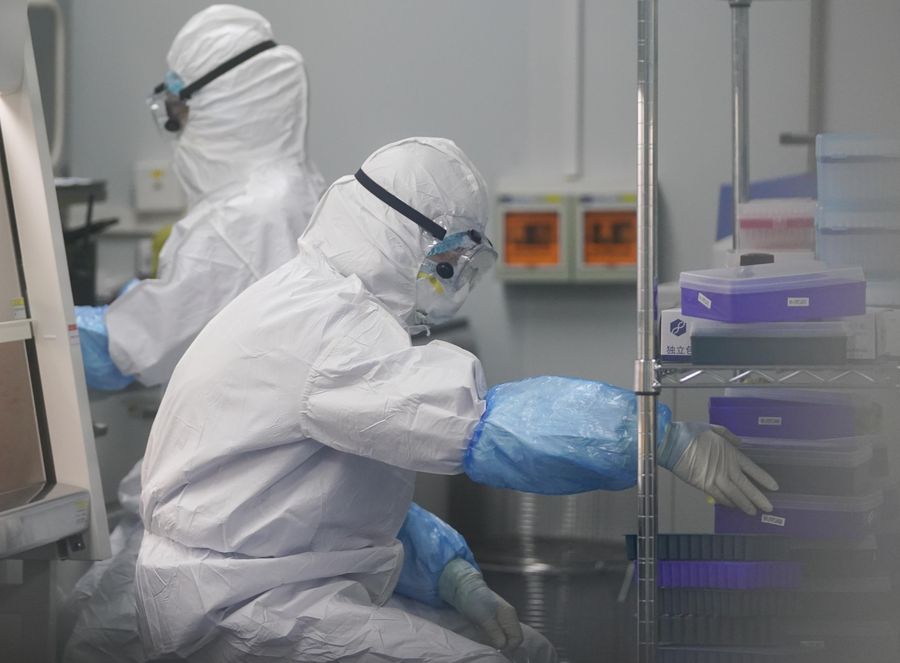
Staff members do nucleic acid testing work at a novel coronavirus detection lab in Wuhan, central China's Hubei Province, Feb. 22, 2020. (Xinhua/Cheng Min)
ACCUMULATING EXPERIENCE
Yang Xiao, a doctor working in the intensive care unit (ICU) of Zhongnan Hospital of Wuhan University, believes that the diagnosis and treatment scheme of COVID-19 plays an important role in the battle.
China has updated the diagnosis and treatment scheme six times from Jan. 16 to March 4 based on its accumulating treatment experience. As an effective guide for the medical staff fighting against COVID-19, the scheme contributes to a continuous decline in mortality from the virus.
"Every word in the scheme was written with great caution, which showed a responsibility for the patients' lives," said Yang." The scheme plays a guiding role, especially for hospitals in some counties and cities in central China's Hubei Province."
Three kinds of experience are crucial in the country's battle against the virus, said Zhang Boli, an academician of the Chinese Academy of Engineering. The first is to strive for early detection, isolation, diagnosis and treatment of COVID-19 cases, and ask people under quarantine to take traditional Chinese medicine decoction, which effectively contained the spread of the epidemic.
The second is expanding treatment capacity through establishing makeshift hospitals to cover all COVID-19 patients, cutting the transmission route of the virus.
The third is the combination of traditional Chinese medicine (TCM) and Western medicine.
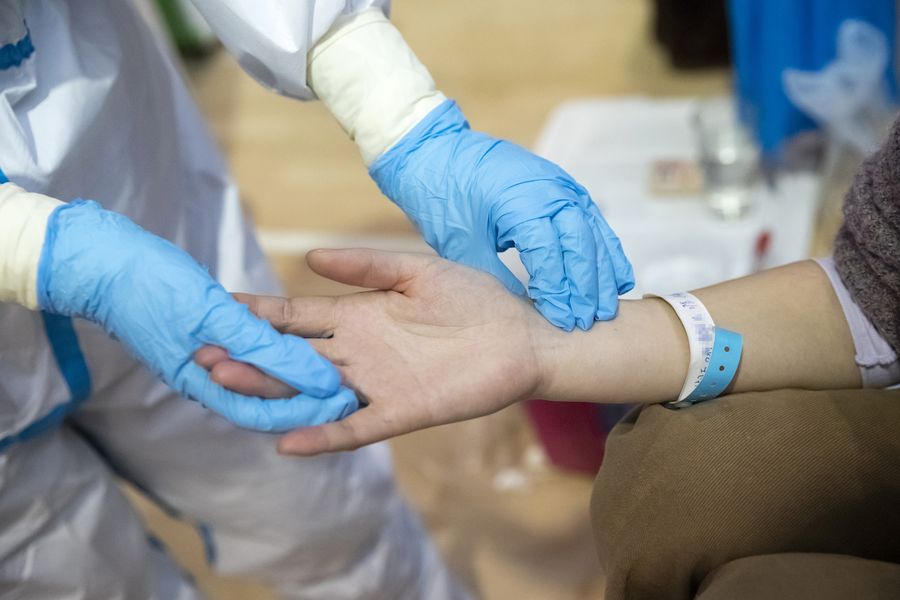
A medical worker examines a patient with traditional Chinese medicine (TCM) therapies at a temporary hospital in Jiangxia District in Wuhan, central China's Hubei Province, Feb. 25, 2020. (Xinhua/Shen Bohan)
Clinical observation showed that the TCM has proven to be effective in the treatment of over 90 percent of all confirmed COVID-19 cases on the Chinese mainland, said Yu Yanhong, Party chief of the National Administration of Traditional Chinese Medicine, at a press conference in Wuhan.
In Hubei, TCM treatment has been given to 90.6 percent of COVID-19 patients.
RACE AGAINST DEATH
Every critically ill patient was taken care of by an ICU team, which provided life support in various ways and the best treatment scheme, said Chen Erzhen, head of Shanghai's second medical team aiding Hubei.
"ICU is the last line of defense for the patients' lives," said Yang. "We are racing against death."
For Zhang Xijing, head of an ICU team in the city's Huoshenshan Hospital, every second can make the difference between life and death of his patients. "We must be faster to save them," he said.
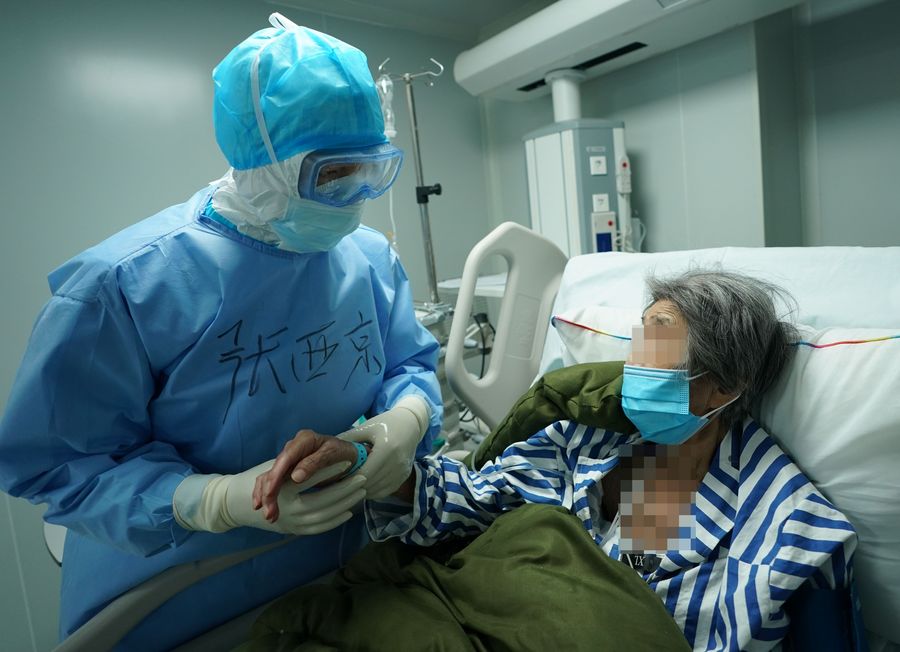
Zhang Xijing inquires the condition of a COVID-19 patient at the Huoshenshan (Fire God Mountain) Hospital in Wuhan, central China's Hubei Province, March 17, 2020. (Xinhua/Wang Yuguo)
After racing against death when rescuing these patients, Zhang and his colleagues also need to run a "marathon" of monitoring and taking care of recovering patients for hours and even days on end.
The doctors treating these patients are risking their own lives as they are exposed to an environment with high concentrations of viral aerosol. "We will not give up as long as these schemes are useful for the patients," Zhang said.
Having fought Ebola in Liberia, Chen Jing, without any hesitation, chose to work on the frontlines again, serving as the head nurse in the hospital. "I see these patients as my friends and family," she said.
Even though Zhang Nan, a nurse in the hospital, cannot always remember what day of the week it is due to the intense work, she never forgets the medical history and condition of each patient. "These patients said that they feel relieved when they see us coming," she said. "They give us priceless trust with their lives."
The hospital has treated 3,040 COVID-19 patients as of 8:00 p.m. on March 22, including 1,442 in severe conditions and 125 in critical conditions. A total of 2,284 patients in the hospital have been discharged.
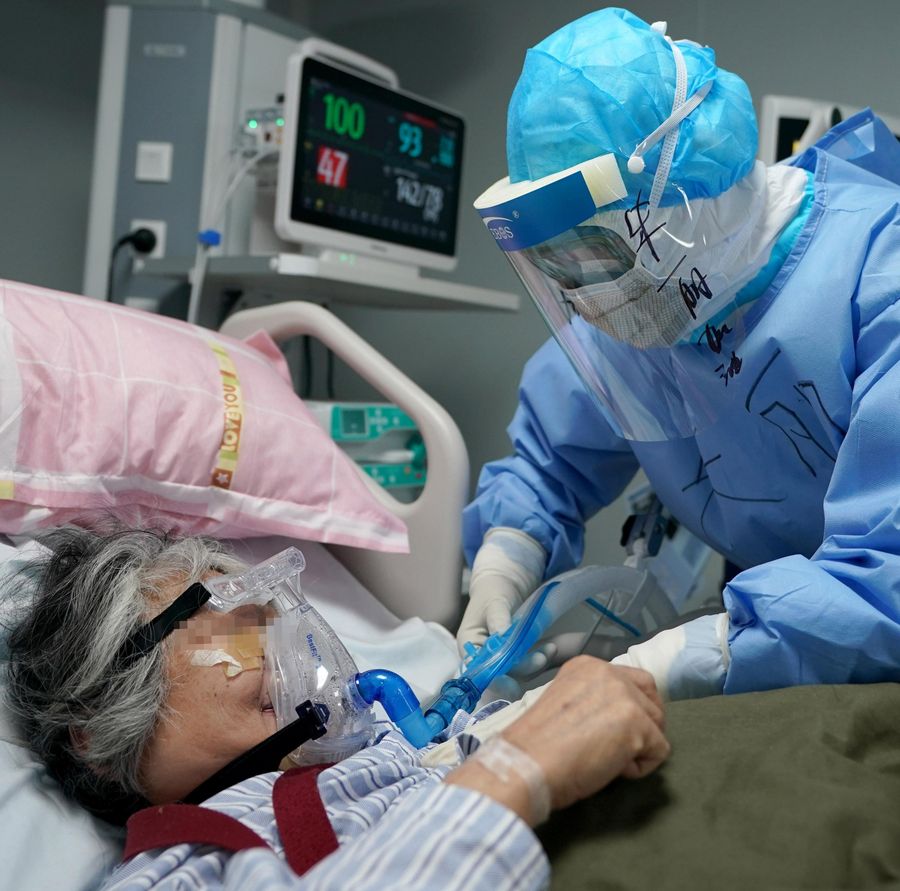
Nurse Zhu Li adjusts devices for a patient at the makeshift Huoshenshan (Fire God Mountain) Hospital in Wuhan, capital of central China's Hubei Province, March 20, 2020. (Xinhua/Wang Yuguo)
The patients in severe and critical conditions in Hubei have dropped to 1,714 from more than 10,000 as of March 23 through the efforts of the medical staff.
SHARING WITH THE WORLD
Fighting against the virus for months, doctors and medical experts in Wuhan are sharing their valuable experience with the rest of the world.
Chinese experts in traditional Chinese and Western medicines have shared their experience via a video call in treating COVID-19 patients with peers from Italy, the United States, Belgium, Japan and the WHO on March 20.
"The best experience of China is to admit all patients to a hospital," Zhou Ning, a cardiologist at Tongji Hospital in Wuhan, said at the video call.
"As COVID-19 is highly contagious, having patients with mild symptoms quarantined at home is like spreading fire everywhere, which will finally lead to the infection of a whole family," he said.
"Nucleic acid testing, binding confirmed cases or people who are exposed to those cases and isolating everybody were done very successfully in Wuhan. This is what needs to be done," Margaret Harris, a WHO spokesperson on COVID-19, said in the video conference.
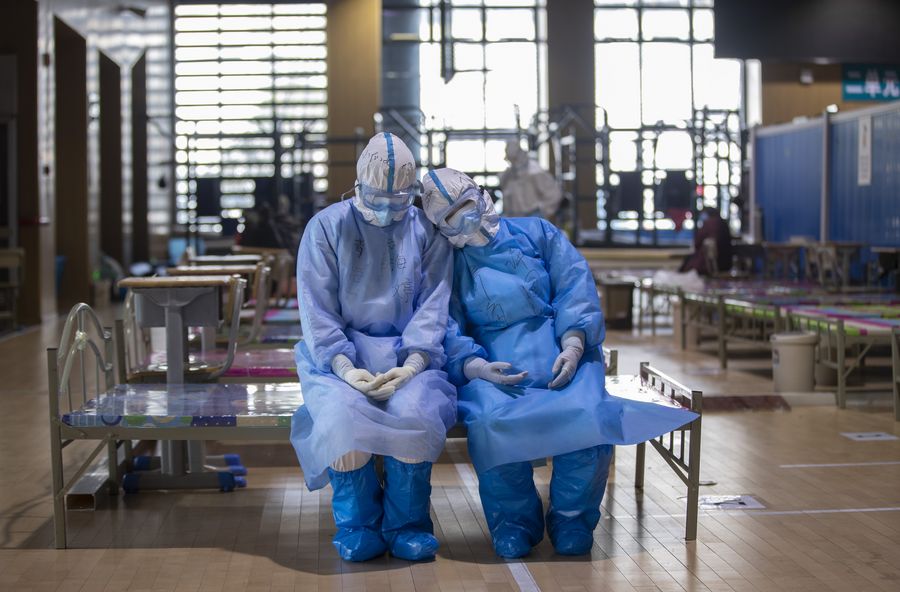
Two medical staff members from northwest China's Qinghai Province take a rest before leaving the Wuchang temporary hospital in Wuhan, central China's Hubei Province, March 10, 2020. (Xinhua/Fei Maohua)
"We are very thankful for the great work that's been done in China and other Asian countries because it demonstrates that it is possible to stop this outbreak," Harris added.
"We have the experience of fighting SARS and massive data on COVID-19 in Wuhan," said Wang Daowen, another cardiologist at the hospital. "It's incumbent on us to share with our international peers."
(Wang Zuokui, Yu Pei, Yue Wenwan, Liao Jun, Hou Wenkun, Cheng Min, Shen Bohan, Wang Yuguo and Fei Maohua have contributed to the story; Video reporters: Wang Siban, Yu Guoqing, Du Yang, Shen Zhonghao and Rao Rao; Video editor: Chen Sihong)■



